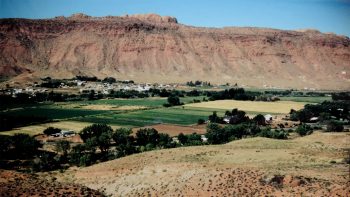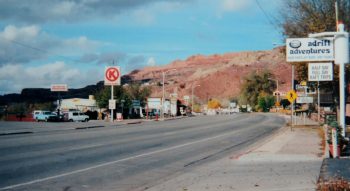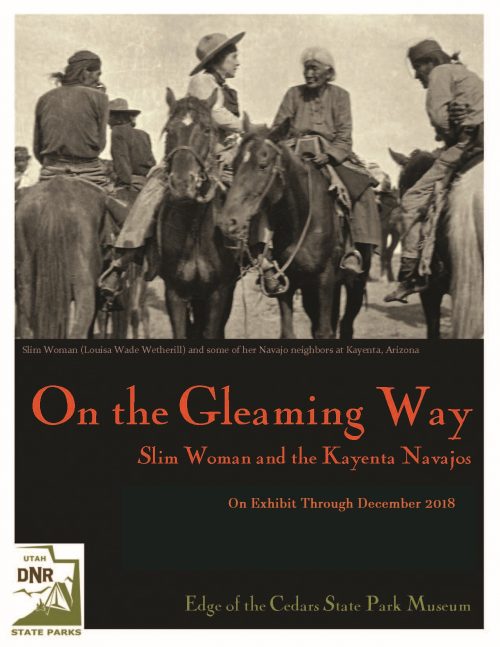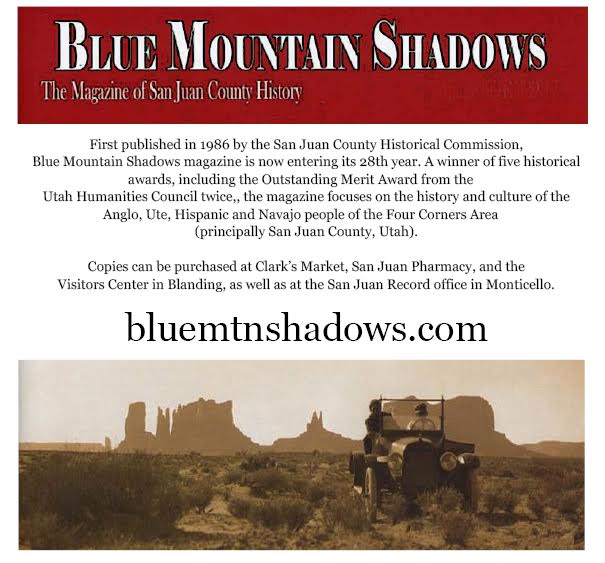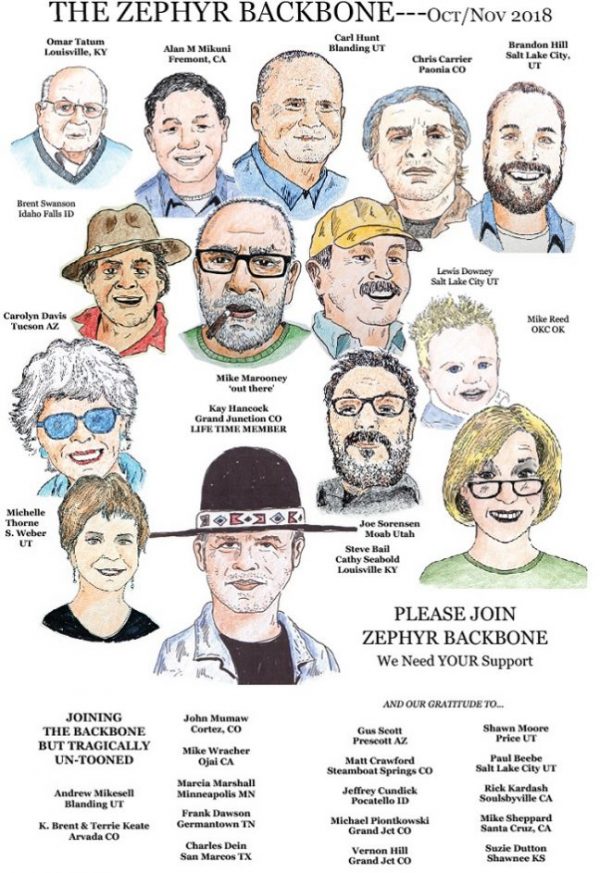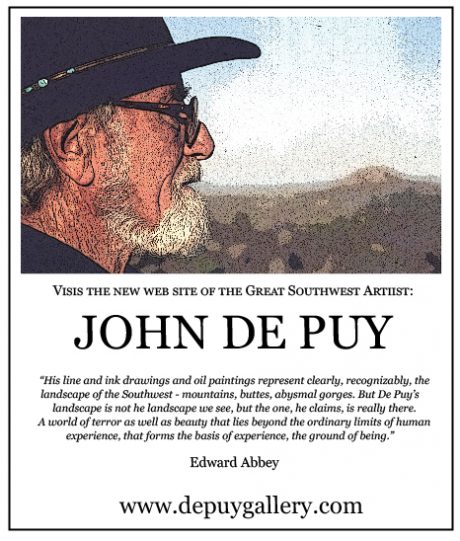Utah’s Transient Room Tax (TRT) has recently made headlines in Southeast Utah. The TRT allows a tax on “transactions involving tourist home, hotel, motel, or trailer court accommodations and services that are regularly rented for less than 30 consecutive days.” Currently, the TRT maximum is 6% and can be modified, or not collected at all, by Utah counties and cities.
In San Juan County, its economic development office is about to embark on the biggest promotion of the area’s scenic areas in over a decade. The “Make it Monumental” campaign will eventually spend almost half a million dollars (a twenty-fold increase from recent promotions) to boost the county’s tourism economy.
Though there have been protests from San Juan citizens who oppose this level of marketing and fear becoming”the next Moab,” the county’s governing body unanimously supports the effort.
In Grand County, its Travel Council recently budgeted almost $2 million to further promote the area’s scenic areas. With Moab and vicinity exploding at the seams, many wonder..when is enough, enough? And there has been a demand that more of the TRT revenues be devoted to dealing with the impacts from such an economy. There is the possibility that a revision of the TRT law may allow Utah communities to use less of their TRT funding for promotion, and more for impacts.
But this isn’t a new issue…TWENTY FIVE YEARS AGO, some citizens in Grand County (and this publication) were already concerned about the ways Industrial Tourism was transforming Moab and vicinity. And we were asking why, in 1993, some of the TRT revenues couldn’t be used to help communities like Moab deal with the changes.
FACTS & OPINIONS: by Ken Davey
FACT
The Grand County Travel Council has solicited the opinions of local residents on what the priorities and programs of the council should be.The group sent out hundreds of surveys, asking local businesses questions pertaining to promotion of tourism and ways to improve it.The council is funded by transient room tax [TRT], paid by guests at area motels and other overnight accommodations. By state law, the money is to be spent on tourism promotion and maintenance of visitor facilities.
OPINION
By virtue of the visitor boom in Moab the last few years, the Travel Council is now one of the wealthiest government bodies around, with annual TRT revenues that by next year should approach half a million dollars, though the ability to spend it is subject to county council approval. That’s more than the hospital gets from property tax, and it’s close to what local landowners pay into the county general fund, so it’s not surprising that everyone and their uncle has gone to the travel council with a jim dandy way to spend it.
Lucky Morse is the Travel Council chairman, taking over at the beginning of this year. He came to Moab a few years back to manage the Utah Power and Light office here, a full time job and half itself, trying to fit an explosion of electrical power demand on to a system that lacks even a basic backup system. And Morse also agreed to take on community service as well, seeing and accepting an appointment to the Travel Council Board a year ago. His timing was less than impeccable; his term began just a short time before the county commissioners decided to take the bull by the tail and pick their own Travel Council director, over the unanimous objection of the board. In response, some good and honest board members decided to hand in their resignations. Other good and honest board members, including Morse, decided to hang in there, to see what can be done to ferret some good out of a bad situation. As it turned out, not a lot of good did come out of it, The visitor center staff is demoralized, the office is in shambles, promotion campaigns routinely authorized in recent years went by the boards, and the Travel Council, cast in the light of the enemy before both the Chamber of Commerce and the City of Moab, found itself tossed out of its building, with no place to go.
A recommendation by the council to hire another director is a step toward ending some of those problems, but the best of the board realized even that move, necessary stopgap that it is, doesn’t address a gnawing feeling that the work of the council is not quite in sync with where the town is going.
The nature of tourism here has changed. Instead of an area that attracted the odd four-wheel drive enthusiasts and the equally odd fans of the high desert who included Arches and Canyolands in their 12-National-Parks-in-a-day vacation swings, we now attract the totally bizarre urban residents who stream down from the Wasatch Front or Colorado for a chance to pedal up canyons even wild sheep, not the brightest of beasts, realize are no place for those with a sense of energy conservation and relaxing quality time. We have a boom going on, and the effects it will have on the landscape, on the human infrastructure, on the social fabric of the community, have never been seriously looked at by any government body. Instead we get proposals, projects, requests for funds.
The Travel Council decided to step back and look at their own situation. They sent out questionnaires to a list of tourist businesses. What kind of promotion do we need? And the results dribbling back in are surprising.
For much of the sentiment expressed, by people who in the main have a financial stake in attracting more visitors, was not so much how we should spend money to promote, but WHETHER we should, or whether much of that money should go toward education of the visitors we have, rather than trying to attract more.
Ask the organizers of the Jeep Safari and the Fat Tire Festival if they want their events to grow even larger, and you’ll be told no, we’re big enough, maybe too big, as it is. Ask the Rim Rock Roadrunners if they want to help in doubling the size of the Canyonlands Half Marathon next year, and they’ll politely say no thanks. A range of individuals, both longtime residents and newcomers, are questioning the precept that the more people streaming south of 191 the better.
Is that sentiment being driven by environmentalism? Undeniably, some of it is, but not a narrow definition of environmentalism that excludes humans from the equation, but a broader understanding that the economic base of the community, the quality of life we have here, the quality that draws a million visitors a year, can be lost if we don’t think and plan ahead.
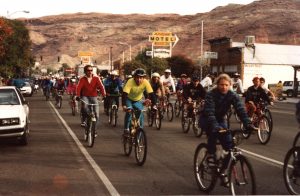 The arguments for further promotion are strong. Las Vegas, Hawaii, Colorado, most tourist areas continue to lure visitors despite record-breaking numbers, because you can never be too memorable to people to people planning on packing the kids into the car or Supersaver coach seats and dollars into their wallet. But there are other possible avenues of promotion beyond passing out brochures and hosting familiarization tours, including projects to preserve and protect the resources.
The arguments for further promotion are strong. Las Vegas, Hawaii, Colorado, most tourist areas continue to lure visitors despite record-breaking numbers, because you can never be too memorable to people to people planning on packing the kids into the car or Supersaver coach seats and dollars into their wallet. But there are other possible avenues of promotion beyond passing out brochures and hosting familiarization tours, including projects to preserve and protect the resources.
The council has taken a big step toward finding some of those solutions with the decision to open up the discussion with the questionnaire. Then they took a big step backward at their March 18 meeting. The public was invited to come and give their views to the council. One local restaurant owner, Dick Rose, did so, stating he did not like a $100,000 commitment to the proposed Green River Golf Course. Dick Rose is not an example of a public relations genius. And if you point out to him that it’s easier to attract flies with honey that vinegar, he will stare at you for a second or two, then question your intelligence for wanting to attract flies in the first place.
But despite Rose’s obvious and self-admitted inability to start a new career as a “bring-us-together” facilitator, he expressed a sentiment that many in town have voiced, at a number of public meetings.
And instead of listening to him, board members reacted defensively, with one board member actually castigating him for daring to raise the question at a meeting where the board encouraged people to raise questions. In one of the more bizarre public meeting occurrences in a county with typically bizarre meetings, that board member criticized Rose for not, months ago, commenting on a golf course feasibility study that has not yet been completed, much less read by the Travel Council.
One step forward, one step back. At least the Travel Council is not moving in the wrong direction.
Ken Davey passed away in December of 2017. He wrote for The Zephyr, off and on, for over a decade. I nicknamed him, “The Dean of the Moab Press Corps,” when he found himself working simultaneously for the local weekly, the radio station and The Zephyr. He was a caring and principled journalist. His “Facts and Opinions” articles always represented to me—and still do—the best and most honest kind of local journalism that any of us can hope for…JS
To comment, scroll to the bottom of the page.
Don’t forget the Zephyr ads! All links are hot!

